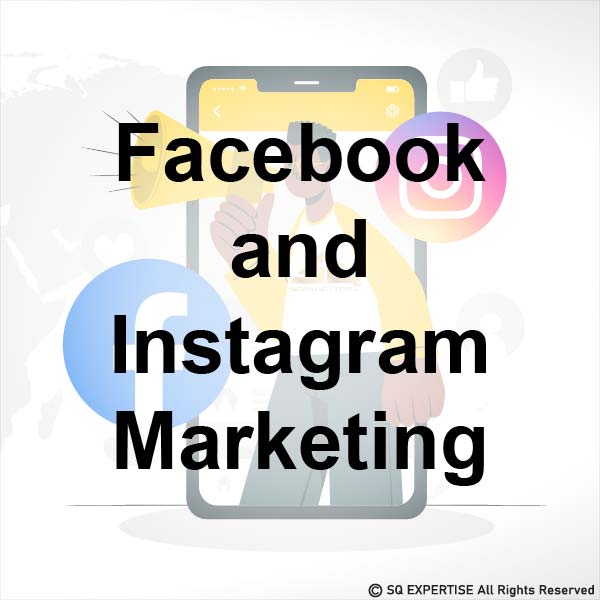The bounce rate can be used to measure the quality of site traffic or landing page. A high bounce rate, as a rule, indicates that the site’s input pages are not relevant to user requests. In such cases, you should not expect high conversion, sales and leads, and the site will not have commercial value.
6 Practical Tips to Reduce Bounce Rate
A bounce rate in the range of 26 to 40 percent is excellent. 41 to 55 percent is roughly average. 56 to 70 percent is higher than average, but may not be cause for alarm depending on the website.
For content like websites, newspaper, personal blog, or website where you are looking for answer has higher bounce rates as visitors, read the information and leave in comparison with affiliate, business or ecommerce store.
Whenever, we start SEO for any ecommerce store, our first target is to get the products and categories ranked against commercial intent than informational. Similarly, during Facebook & Instagram Marketing, the target is users who interact with the website in terms of Add to Carts, Signs Ups & Check Outs.
If we are doing YouTube marketing or managing SEO of YouTube Channel, then it solely depends upon the time a person watches your video. And the target of every content creator, website designer and digital marketing company is to have the least bounce rate possible.
How does Google Analytics calculate bounce rates?
Web page bounce rate = number of page bounces (for a certain period)/number of page views (for the same period)
Here, failures are the number of visits with a single page view, while views are the number of times that users have visited this page of the site.
Site bounce rate = number of all site pages failures (for a specific period)/number of jumps to all site pages (for the same period)
This is how statistics look like with data on failures in Google Analytics. Above is the indicator for the entire site, below – for individual pages of the site.
Below are ways to help reduce bounce rates.
Now you know how its calculated and now you will know How to reduce Bounce Rate
1. Adjust your site’s bounce rate
The most effective way to reduce the bounce rate is to correct it by calculating the time a user spends on a page on average.
In this case, you can find out the real failure rate. There are many situations where conversions are made to visits that are counted as refusals. For example, this often happens with blogs, news and publishing sites: users enter and stay on the landing page without further transitions. The fact is that many come to these sites just to read the latest news or articles, and they do not need to go to other pages. But because of the many visitors who have visited only one page, Google Analytics will generate a 100% bounce rate.
When a user has converted, his visit should not be counted as a refusal, even if he has only visited one page. After all, the main purpose of creating a website is to get conversions, and not to optimize the bounce rate.
2. Stop advertising on keywords and sites that don’t generate valuable traffic.
If users who do not need a product / service come to the site, they immediately leave it. Identify the sources that lead to poor-quality traffic and stop advertising to them.
With respect to word Advertising or Promotion, SEO Campaigns against those keywords. It’s against the policy of Search Engines and during Google Ads, you have less AD SCORE, as well being irrelevant.
If the top is big, then you should make three (3) separates Pages.
For Example:
We Offer, Website Designing and website development services.
But we have made separate pages for our services based on details as website development services, that are entirely different from website designing services. Similarly, an ecommerce store’s website design and development services, requirements and the way of setting up things is different as compared to a service based website like that of Salon, or rent a car service.
3. Create landing pages that satisfy user requests
If you get good traffic, but the landing page does not satisfy the user’s request, he will quickly leave the site. Always be relevant.
Relevancy is the KEY not only to ranking high in SERPs but also for the users as well.
For example, if a user is looking for Himalayan Salt Lamps suppliers, a page should be relevant as compared to if someone wants to know, if his salt lamp is original or fake.
This is where you will get the lead and where you provide the information. I hope you get the point I am trying to make.
Similarly, someone is looking for USA-made fixed blade knives from a brand named TOPS Knives.
Now, the user (customer) wants to know, what people are saying, and a resource where one can read about knives reviews. He will look for TOPS Knives Reviews
There the user reads and comes to know more about a tracker knife and wants to buy it right away with most competitive price for product TOPS Tom Brown Tracker, then being a user they will end up buying from there.
Therefore, relevancy and separate pages do matter in our daily routine, Same goes for others and even search engines.
4. Highlight the Call-to-Action on the Landing Page
If the landing page does not have a call to action (CTA) or is poorly visible, then it will be difficult for you to keep users on the site.
Headings, subheadings, and hints (to bring the user to the CTA) are a great way to make the CTA noticeable.
For example, this text is about reducing the bounce rate, and the topic becomes apparent through subtitles.
With increasing number of Users for Mobile Devices, ensure that you provide the best CTA Options in your landing page designs for Mobile Users.
5. Place clear content on the landing page
If the landing page is relevant to the user’s request, but the content cannot be perceived quickly, then a high bounce rate can be expected.
Even if some users are still interested in the content, they will be more likely to leave the site or bookmark it, deciding to return later.
Reason: It’s easier to read more paragraphs when you are free. Bullet points give much easier, faster and eye-catching information.
Therefore, it is necessary to create content that can be perceived quickly and easily: use short abstracts, images and infographics to catch the visitor’s attention.
6. Conduct polls on page
If you have tried everything and cannot understand what is wrong with the landing page, then you need to conduct a survey on the page.
Add the thumbs up and thumbs down buttons to the landing page (you don’t need to register for clicking on them) to find out from visitors why they are leaving the landing page.
Conclusion
As we provide SEO Services and to rank better and stay on top, we make sure that the above mentioned key points are taken care of.
If you add value to your website users, they will provide you the business.











